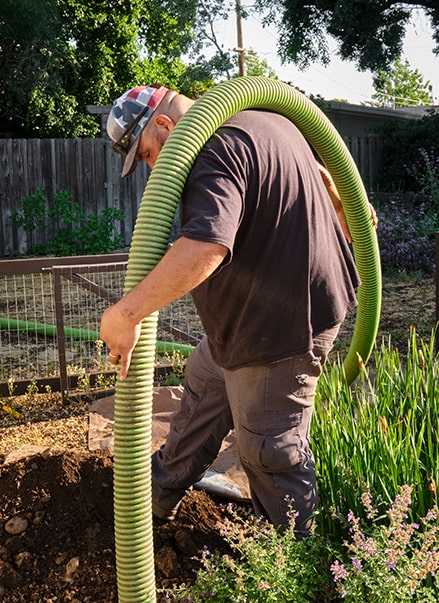Serving Butte County for Over 40 Years!
Septic Tank Pumping
Septic Tank Pumping
Septic tank pumping is one of the many services we offer at Chico Septic. We use the latest technology to efficiently clean your septic system. We can handle any size tank, whether it be on a residential or commercial property. We always pump both sides of the tank thoroughly, and all our work is guaranteed and backed by our commitment to provide only the best service.
Having your septic tank pumped at the right time is critical to the health of your system. Let’s go over the ins and outs of septic tank pumping.

FAQs about Septic Tank Pumping
-
Why does a septic tank need to be pumped?
With any property that has a septic system, sewage from every single plumbing fixture goes right into the septic tank. That includes sewage from toilets, showers, kitchen sinks—think garbage disposal waste—and any other source of plumbing. Over time, solid waste that doesn’t decompose remains in the tank. If the tank goes too long without being pumped and that waste isn’t cleared out, it can lead to some serious problems.
-
How often does a tank need to be pumped?
The answer to this question depends on the size of your household and how much water is used. We usually recommend pumping your tank every 3-5 years. If you have a larger family and use a significant amount of water, we recommend having your septic tank pumped more frequently.
With every pump we perform a complimentary maintenance inspection. This includes checking for compromised areas in or around the system, worn or broken parts and overall operating condition of your tank.
-
What does the pumping process look like?
Step 1: Septic Tank Access Lids Uncovered and Opened
Before any work can begin, the technicians will need to uncover your tank access lid(s). If your system was installed after the 1980s, it would have two separate compartments,
From this point, the work crew will open the lid(s) to your tank. This might seem like a simple task, but corrosion and general wear-and-tear can make it difficult. In some cases, your lid(s) will need to be replaced. Your technician can provide a quote to install risers, which allow for better access during any future upkeep.Step 2: Your Tank Will Be Pumped Out
Using a high-power hose that’s connected to our vacuum truck, all the liquids and solids will be sucked out of your sewage tank. While the hose is usually powerful enough to remove all debris and waste, there are certain times when thick sludge and solids will be left behind.
Step 3: Visual Inspections Will Take Place
After the septic pumping and cleaning steps have been completed, our crew will check the tank’s interior and exterior for any root presence or deterioration. They will also look over the septic tank baffles and dividing wall. The tank’s overall liquid operating level will be measured to ensure that the tank is leaching properly.
Step 4: The Tanks Lid Will Be Closed and Reburied
Once the inspection has been completed, your lid will be closed and covered back up. In most circumstances, septic tanks are buried between six and twelve inches below ground.
Call us for a free estimate today at (530) 343-6340!
